Comprehensive Guide to Skid Steer Angle Broom Attachments
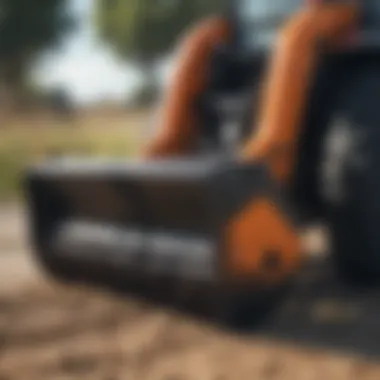
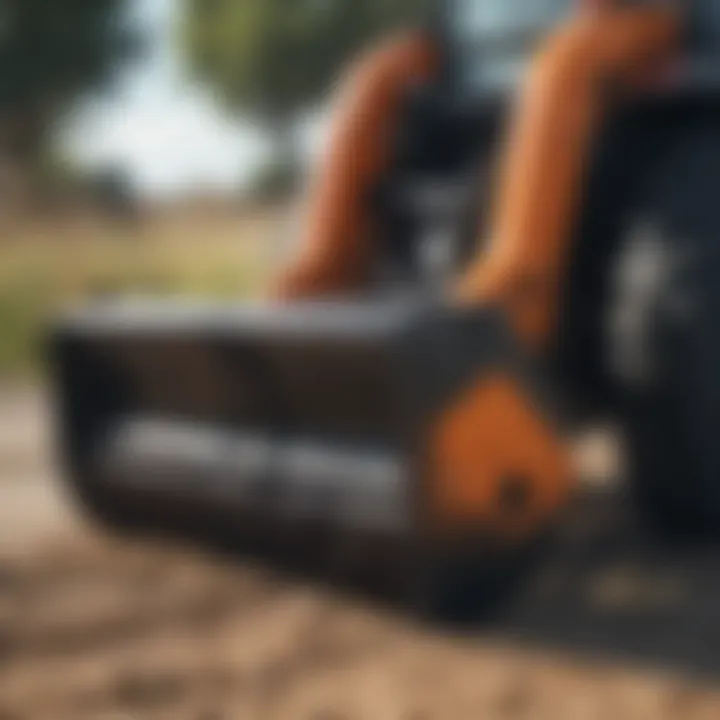
Intro
Understanding the dynamics of skid steer angle broom attachments is essential for professionals in agriculture and landscaping. As these tools become integral for efficient soil and debris management, having a comprehensive perspective on their functionality can significantly enhance productivity. This guide delves into their crucial characteristics and operational practices, ensuring you harness the full potential of these attachments.
Overview of the Topic
Definition and Importance
Skid steer angle broom attachments are specialized Implements designed for skid steers. Their primary function is to sweep, move, and clear materials like dirt, gravel, and debris from various surfaces. These attachments provide numerous advantages, including improving work efficiency and reducing labor costs. Professionals engaged in landscaping and agricultural tasks find them particularly beneficial in maintaining cleanliness and preparing sites for planting or other activities.
Current Trends
Recent years show a marked increase in the adoption of skid steer angle brooms. The demand stems from the need for versatile equipment that can manage various terrains. Adjustable angles allow users to customize the broom's position, enhancing its effectiveness in diverse conditions. Moreover, there is a growing emphasis on durable construction materials that withstand rigorous applications, reflecting industry trends toward longevity and operational efficiency.
Key Techniques and Practices
Step-by-Step Guide
To operate skid steer angle broom attachments effectively, follow these steps:
- Preparation: Ensure the skid steer is suitable for the attachment, checking both weight and hydraulic compatibility.
- Attachment: Safely mount the angle broom on the skid steer using the proper attachment processes.
- Adjustment: Set the broom's angle to suit the task, either for sweeping or pushing materials.
- Operation: Gradually control the skid steer’s speed; a slower pace often provides better results in sweeping.
- Maintenance: Regularly check for wear and tear, cleaning the attachment after use to prolong its lifespan.
Tools and Equipment Needed
While the skid steer angle broom is the primary tool, additional equipment may include:
- Personal protective equipment (PPE)
- A reliable hydraulic system
- Mobility aids like cones or markers to delineate work areas
- Cleaning solutions for maintenance
Challenges and Solutions
Common Obstacles
While operating skid steer angle brooms can be straightforward, users might encounter challenges such as:
- Wear on bristles: Frequent use may lead to bristles wearing down quickly.
- Dirt build-up: Soil and debris can accumulate, leading to potential malfunctions.
- Compatibility issues: Not all attachments fit every skid steer model.
Innovative Solutions
To mitigate these challenges:
- Regularly inspect and replace worn bristles to maintain efficiency.
- Schedule routine cleanings to prevent dirt accumulation.
- Consult manufacturer guidelines to ensure compatibility before purchasing an attachment.
Effective management of attachments not only improves productivity but also enhances the lifespan of your equipment.
In summary, skid steer angle broom attachments are invaluable tools in agriculture and landscaping. By understanding their functions and addressing operational challenges, users can maximize their benefits, leading to greater efficiency and outcomes in their projects.
Prolusion to Skid Steer Angle Broom Attachments
Skid steer angle broom attachments serve a vital role in modern landscaping and agricultural practices. These attachments improve efficiency when cleaning and preparing surfaces, which is crucial for maintaining both aesthetic and functional aspects in various settings. The ability to effectively remove debris, snow, and other materials has made angle brooms highly sought after by professionals in the field.
Definition and Purpose
A skid steer angle broom attachment is designed to be mounted on a skid steer loader. It consists of a rotating brush that can be angled for optimal cleaning. The primary purpose of this attachment is to sweep and clear a variety of surfaces, including paved roads, driveways, paths, and even unpaved areas. This versatility makes it a significant asset in the toolkit of any landscape contractor or agricultural professional.
The angle feature allows operators to tilt the broom for better performance, depending on the task. Whether it's removing dirt and debris or clearing snow, the angle broom provides adaptability that more static attachments cannot offer. Because it can switch its position while in use, it helps minimize the need for multiple passes over the same area.
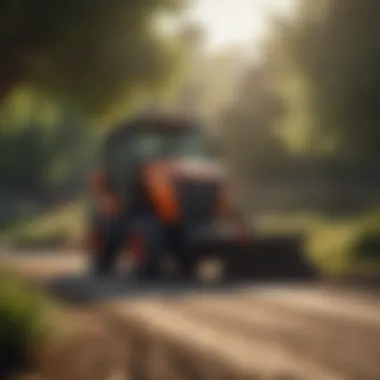

Overall, understanding the definition and purpose of skid steer angle broom attachments sets the stage for appreciating their technical details and practical applications.
Historical Development of Broom Attachments
The historical development of broom attachments for skid steers is rooted in the evolution of construction and agricultural equipment. Initially, manual labor dominated the process of cleaning and maintaining outdoor spaces. Over time, the advancement of machinery transformed these labor-intensive tasks.
The introduction of skid steer loaders marked a significant turning point. They provided a compact and powerful solution capable of handling various tasks. As operators sought more specialized attachments, broom devices began to appear. Early models were much simpler, consisting primarily of brushes mounted onto a frame.
As technology advanced, these broom attachments became specialized. Manufacturers began incorporating innovative features such as angle adjustments, more durable bristle materials, and effective motor systems. The result is a range of high-performance angle broom attachments that are essential in both urban landscaping and rural agriculture.
This historical perspective on broom attachments highlights not only their evolution in design and functionality but also their increasing importance in efficient surface maintenance.
Technical Specifications of Angle Brooms
The technical specifications of angle broom attachments are essential in determining their effectiveness and efficiency in various applications. Understanding these specifications not only aids in selecting the right attachment but also optimizes the performance of the skid steer. There are multiple factors when assessing specifications, including construction materials, brush types, and power requirements. These factors work in tandem to enhance productivity and ensure a longer lifespan for the equipment.
Construction Materials
The construction materials used in angle broom attachments directly impact their performance and durability. Typically, angle brooms are made from high-strength steel and high-density plastics. Steel provides structural integrity, ensuring that the attachment can withstand rigorous use in demanding environments. High-density plastic, on the other hand, is often used for components that require flexibility and resistance to wear.
Each material has its advantages. Steel is robust and can endure heavy loads, making it suitable for challenging tasks. However, it may be prone to rust if not properly maintained. High-density plastics are more resistant to corrosion but may not hold up as well under extreme conditions. Therefore, a balanced use of these materials is often ideal for achieving durability without compromising performance.
Brush Types: Choosing the Right Material
Selecting the right brush type is crucial for the attachment's efficiency. Angle brooms usually utilize bristles made from different materials such as nylon, polypropylene, or steel. Each type has specific attributes that make it suitable for distinct tasks.
- Nylon Brushes: These are versatile and resistant to wear, ideal for grassy and light-duty applications. They will not damage the surface beneath them, making them suitable for landscaping.
- Polypropylene Brushes: These brushes are more rigid and capable of handling tougher materials, including gravel and debris. They are excellent for heavier cleaning tasks and can withstand significant pressure.
- Steel Brushes: Used primarily for industrial applications, steel brushes are effective for heavy-duty jobs, such as removing rust or adhesive materials. However, they can easily damage softer surfaces.
Choosing the appropriate brush type depends on the specific application and surface conditions. Properly matching the broom to the task can significantly enhance efficiency and prolong the attachment's lifespan.
Power Requirements and Compatibility
Another crucial aspect of angle broom attachments is their power requirements and compatibility with skid steer models. Each model has specific hydraulic demands that must be met for optimal performance. Before purchasing an attachment, it’s vital to check both the hydraulic flow rate and pressure specifications of the skid steer.
Most angle brooms operate effectively within a defined range of hydraulic flow, generally between 10 to 30 gallons per minute. It is equally important to consider the attachment's pressure ratings, typically around 2,000 to 3,000 PSI.
Compatibility plays a significant role in ensuring effective operation. Angle brooms are available in various designs, but not all may fit every skid steer model. Checking the manufacturer specifications is crucial to ensure the attachment will work seamlessly with the specific skid steer being used.
"Understanding the technical specifications of angle brooms can lead to a more informed purchasing decision and better overall performance in the field."
In summary, technical specifications including construction materials, brush types, and power requirements are crucial elements. Each specification influences the attachment's capabilities and is key to executing tasks efficiently and effectively.
Applications of Skid Steer Angle Broom Attachments
The versatility of skid steer angle broom attachments makes them valuable tools in various industries. Their applications extend beyond simple cleaning tasks, addressing the dynamic needs of landscaping, snow removal, and agricultural practices. Utilizing these attachments enhances efficiency, reduces labor costs, and provides a more organized approach to maintenance and cleanup. Understanding the diverse applications is crucial for maximizing the benefits these tools offer.
Landscaping and Maintenance Tasks
Angle brooms serve a significant purpose in landscaping and maintenance. They are ideal for removing debris from gardens, parks, and pathways. The brushing action effectively clears leaves, dirt, and other materials, ensuring a clean and presentable outdoor space.
In addition to general cleaning, angle brooms are also adept at redefining landscape edges, like curbs and garden borders. This not only beautifies an area but also promotes proper drainage and enhances the lifespan of landscape elements. Here are some specific benefits of using angle brooms in landscaping:
- Time Savings: Using a skid steer with an angle broom accelerates the cleaning process compared to manual labor.
- Minimal Ground Disturbance: The design of angle brooms limits soil disruption, which is critical in delicate landscaping jobs.
- Precision Work: Operators can maneuver in tight spaces, ensuring areas are thoroughly cleaned without damaging nearby plants or structures.
Snow Removal Techniques
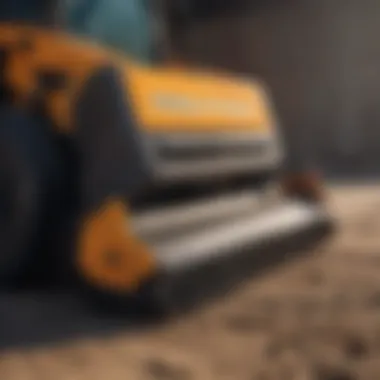
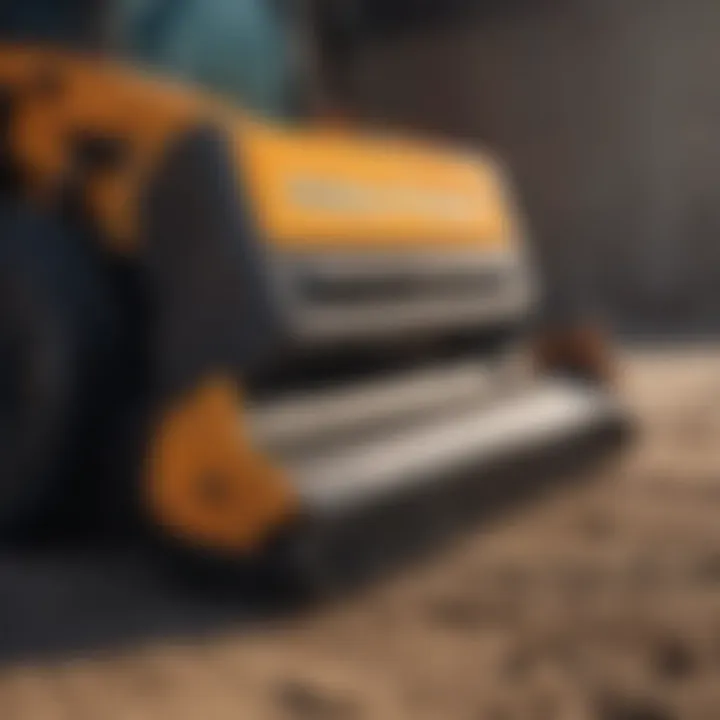
Angle brooms are also effective in snow removal, providing an efficient alternative to traditional snow plows. Their ability to sweep snow away from sidewalks, driveways, and parking lots minimizes the risk of ice formation. In harsh winters, this is essential for maintaining safety in public and private areas.
When using angle brooms for snow removal, several factors should be considered:
- Blade Adjustment: Keeping the broom set at the right angle enables better performance, adapting to different snow depths and ground types.
- Speed Management: Operators should adjust their speed based on snow consistency. Heavy, wet snow requires a slower approach.
- Material Quality: Selecting an angle broom with durable bristles will improve longevity and effectiveness, especially in colder conditions.
Agricultural Applications
In the agricultural sector, angle broom attachments exhibit their utility in various tasks. They are particularly useful for clearing fields of debris and preparing land for planting. Brooms can remove dirt clods, crop residues, and unwanted materials that may hinder planting or harvesting.
Farmers find the following advantages when incorporating angle brooms into their operations:
- Soil Preparation: Cleared fields can enhance soil aeration, leading to better planting and crop yield.
- Crop Health: By removing debris that could harbor pests or diseases, angle brooms promote healthier crops.
- Enhanced Workflow: Time spent on cleanup is significantly reduced, allowing more time for other essential farming activities.
In summary, the applications of skid steer angle broom attachments are extensive. Their effectiveness in landscaping, snow management, and agriculture delivers measurable benefits, enhancing operational efficiency and promoting a higher standard of maintenance across various tasks. This versatility exemplifies why these attachments are crucial for any professional in related fields.
Advantages of Using Angle Broom Attachments
Using angle broom attachments on skid steers significantly enhances operational efficiency and cost-effectiveness. These advantages provide valuable insights into why such tools are indispensable in various tasks, especially in agriculture and landscaping. The discussion that follows elaborates on distinct benefits associated with angle broom attachments, focusing on their capability to optimize performance and reduce labor costs.
Enhanced Efficiency in Operations
Angle broom attachments are designed to improve the speed and accuracy of sweeping operations. They help workers complete tasks quicker than traditional methods. The ability to rotate and adjust the broom angle allows for better manoeuvrability around obstacles. This is essential in tight spaces where precision is required.
When it comes to heavy-duty tasks, the power of the skid steer combined with the broom attachment creates a synergetic effect. Operators can clear debris such as dirt, leaves, and gravel in one motion. Compared to other equipment options, angle brooms tend to cover more ground efficiently. As a result, less time is wasted transitioning between different tools for various jobs.
Moreover, the design of angle brooms allows for consistent performance regardless of the surface. Whether on gravel roads or concrete, angle brooms ensure thorough cleaning. This reduces wear on surfaces and contributes to longer-lasting wearability of driveways or pathways. Consequently, operators can maintain these surfaces effectively, which is more challenging with other equipment.
Cost-Effectiveness and Time Savings
The integration of angle broom attachments into operations leads to tangible savings. Fewer personnel are required to complete a job when using these attachments. This reduction in labor not only decreases direct costs but also saves time. The time saved can be redirected to other essential tasks or projects, further maximizing productivity.
Additionally, operating a skid steer with an angle broom is often cheaper than maintaining a fleet of dedicated cleaning equipment. Less complex machinery means lower maintenance costs, making angle brooms a financially sound investment. They are versatile and can be utilized across various tasks, such as snow removal in winter or debris clearance in construction sites, thereby consolidating equipment investments.
"The use of angle broom attachments represents both a time-saving and cost-saving strategy that can streamline operations significantly."
In summary, the advantages gained from using angle broom attachments are multifaceted. They encompass improved efficiency in operations and significant cost-effectiveness. Ultimately, these factors contribute to optimized workflow, making these attachments an essential choice for professionals involved in agriculture and horticulture.
Best Practices for Operating Skid Steer Angle Brooms
Operating skid steer angle brooms effectively is crucial for achieving optimal results in various tasks such as landscaping, snow removal, and more. Understanding best practices not only enhances the operational efficiency of the broom but also ensures safety and prolongs the attachment's lifespan. Below, we explore safety considerations and maintenance tips, which are essential for both novice and experienced operators of skid steer angle brooms.
Safety Considerations
Safety is paramount when operating any heavy machinery, including skid steer angle brooms. The equipment often operates in busy environments, presenting numerous hazards. To mitigate risks, operators should follow several key guidelines:
- Personal Protective Equipment (PPE): Always wear appropriate PPE. This includes safety goggles, gloves, and sturdy footwear to protect against debris and potential injuries.
- Familiarization with Equipment: Understanding the specific controls and functions of the skid steer and the angle broom attachment can prevent accidents. Operators should spend time reviewing the user manual to grasp the machine's operation thoroughly.
- Clear Working Area: Before starting, inspect the worksite to remove obstacles. This reduces the chance of collisions, which can damage the broom or cause accidents.
- Stay Aware of Surroundings: Always be vigilant about personnel and other equipment nearby. Operations should cease if someone enters the work area to prevent injury.
Implementing these safety measures promotes not only the operator's safety but also ensures that the task can proceed without interruptions.
Maintenance and Care Tips
Regular maintenance of skid steer angle broom attachments is essential for maintaining their performance and extending their operational life. Below are practical care tips to follow:
- Routine Inspections: Conduct frequent checks on the broom for signs of wear and tear, especially on the brushes and hydraulic components. Addressing issues early can prevent costly repairs later.
- Brush Replacement: Depending on usage, brushes may wear down. Regularly check the condition of the bristles and replace them if they appear frayed or damaged. This ensures efficient sweeping action.
- Mechanical Check-ups: Periodically inspect all mechanical connections and bolts. Ensure that everything is properly tightened and functioning to avoid unexpected failures during operation.
- Cleaning the Attachment: After use, clean the broom to remove dirt and debris. This will help in preventing rust and corrosion, which can adversely affect functionality.
- Lubrication: Keep all moving parts lubricated as per the manufacturer’s guidelines. This reduces friction, preventing overheating and premature wear.
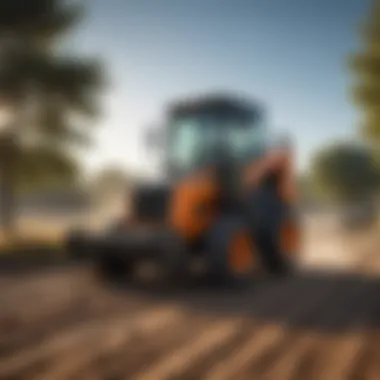
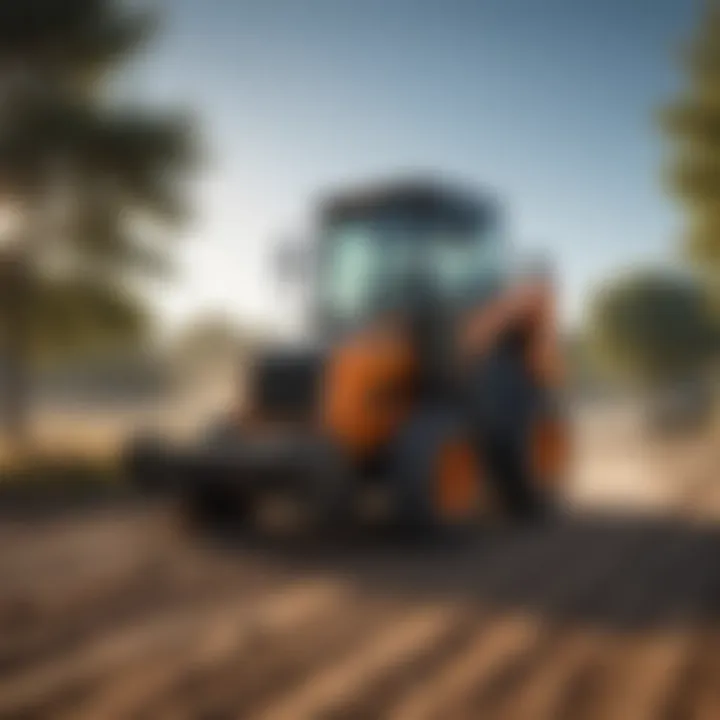
By adhering to these maintenance practices, operators can significantly prolong the lifespan of their skid steer angle broom and maintain it in optimal working condition.
"Regular maintenance not only ensures the longevity of equipment, but also enhances its performance during operation."
Comparison with Other Attachments
In the realm of skid steer attachments, understanding the nuances of various options available is essential for maximizing operational efficiency. Different attachments serve unique functions and choosing the right equipment can significantly affect the productivity and effectiveness of landscaping, snow removal, and agricultural tasks. This section focuses on the comparison between skid steer angle broom attachments and other popular alternatives, notably traditional broom attachments and sweeper attachments.
Angle Broom vs. Traditional Broom Attachments
Traditional broom attachments, while effective for general sweeping tasks, lack the versatility that angle broom attachments offer. An angle broom can be adjusted to sweep debris at different angles, providing enhanced control over sweeping direction. This feature is particularly beneficial when working along curbs or in tight spaces. With traditional brooms, operators must reposition their machinery more often to achieve similar results.
- Flexibility: Angle brooms provide a range of sweeping angles, which also eliminates the need for additional equipment.
- Debris Management: The ability to control the broom's angle allows for more effective collection of leaves, dirt, and gravel. This is crucial for maintaining clean outdoor spaces.
- Time Efficiency: Directing debris to a designated area becomes easier with angle brooms, leading to reduced operational time.
In contrast, traditional broom attachments generally have a fixed sweeping angle, which can limit productivity and complicate cleaning tasks. The restricted maneuverability results in a higher likelihood of missed spots and may necessitate a secondary pass to ensure thorough results.
Angle Broom vs. Sweeper Attachments
Sweeper attachments are another alternative for cleaning surfaces but differ significantly from angle broom attachments in design and application. While both devices excel in debris collection, an angle broom often provides advantages in maneuverability and versatility.
- Debris Types: Angle brooms handle a wider variety of debris – from loose mulch to heavier items such as soil or gravel. Sweeper attachments are generally optimized for finer particles and tend to struggle with larger debris.
- Operational Scope: Angle brooms perform better in different environments, including commercial, agricultural, and residential areas. Their ability to adjust angles makes them adaptable for various tasks, from lawn care to winter snow cleaning.
- Maintenance: Angle broom attachments typically require less maintenance compared to sweeper attachments, which may include complicated conveyor systems prone to wear and tear.
"For tasks involving diverse debris types or uneven terrain, the angle broom proves to be a more effective choice."
Future Trends in Angle Broom Technology
Advancements in skid steer angle broom technology are continuously evolving. Understanding these future trends is essential for professionals in agriculture and landscaping. These trends improve efficiency and effectiveness in various tasks. The focus is on material advances and automation features, which offer numerous benefits.
Innovations in Material Science
Material science is pivotal in developing angle broom attachments that are resilient and efficient. New materials are being explored to enhance the durability and performance of brooms. Lightweight composites and specialized polymers are significant developments. They provide strength without adding extra weight.
Such materials contribute to better maneuverability and reduce wear and tear during operation. Furthermore, innovations in bristle technology, including advanced synthetic fibers, enhance the cleaning ability. This ensures a more thorough sweep, tackling both fine debris and larger particles.
"Using advanced materials can significantly decrease maintenance costs over time."
These advancements also allow for customized solutions tailored to specific conditions, whether in landscaping or agricultural fields. It enables operators to choose the right attachments depending on their tasks.
Automation and Smart Attachments
The move towards automation in angle broom technology reflects broader trends in the construction and agriculture industries. Smart attachments, which are equipped with sensors and data analytics, are becoming more common. They improve operational efficiency by providing real-time feedback on broom performance and terrain conditions.
These automated systems can adjust the angle of the broom based on the specific task at hand. For example, during snow removal, it can change its position based on the snow's depth and density. This adaptability minimizes operator error and maximizes productivity.
Key benefits of these advancements include:
- Enhanced precision: Automated systems make it easier to maintain consistent pressure on surfaces, ensuring better cleaning outcomes.
- Data collection: Real-time feedback allows for performance tracking, leading to improved operational decisions.
- Reduced physical strain: Automation reduces the need for continuous manual adjustments, which can be tiring for operators during long jobs.
The End
The conclusion serves as a pivotal component of this article, encapsulating the essential themes surrounding skid steer angle broom attachments. It is crucial for professional users, particularly those engaged in agriculture and horticulture, to grasp the totality of functionality and utility these attachments offer. In an era where time and efficiency directly correlate with operational costs, understanding the role of angle brooms is invaluable.
Summary of Key Points
This guide has outlined various crucial aspects of skid steer angle broom attachments. Here are the key points summarized:
- Definition and Purpose: Angle brooms are designed to maximize cleaning efficiency in different environments, effectively managing debris, whether it is in landscaping or winter snow removal.
- Technical Specifications: The materials used, brush types, and compatibility requirements highlight the importance of selecting the right equipment for specific tasks.
- Applications: The versatility of angle brooms in landscaping, snow removal, and agricultural tasks showcases their multi-faceted utility.
- Advantages: Benefits include improved operational efficiency and cost-effectiveness, directly impacting profitability.
- Best Practices: Following safety protocols and regular maintenance ensures longevity and optimal performance of the attachments.
- Future Trends: Innovations in materials and technology point towards a continually evolving landscape in equipment capabilities.
Closing Thoughts
In summary, understanding skid steer angle broom attachments is vital for professionals looking to enhance productivity while managing operational costs. The combination of technical insights, practical applications, and awareness of future trends equips users with the knowledge to make informed decisions. The ongoing advancements in technology and material science will continue to shape the efficiency and functionality of these attachments in the agricultural and landscaping sectors. Therefore, investing time to comprehend these elements will offer substantial returns in operational capability and cost management.



